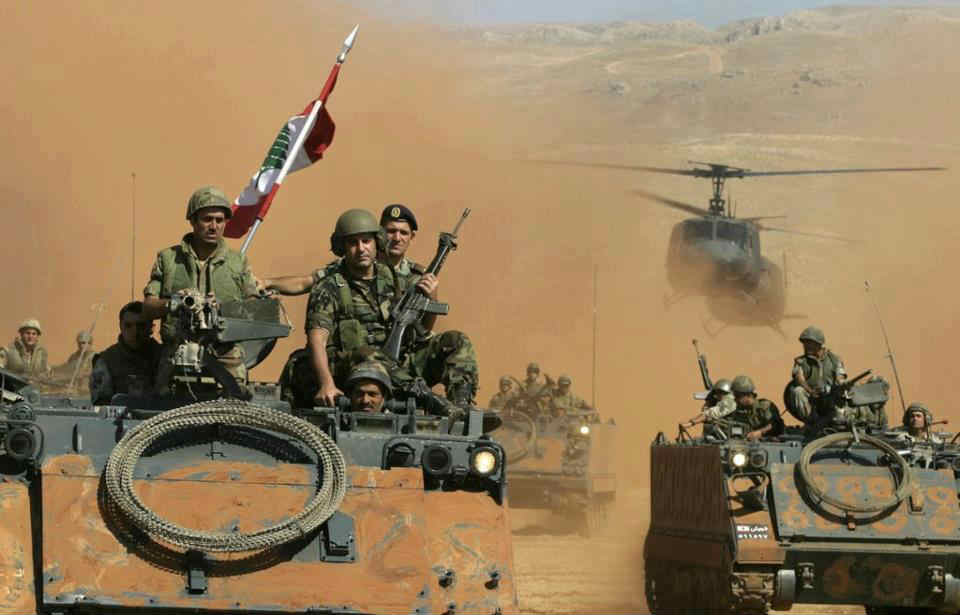
In a remote corner of Lebanon near the border with Syria,
Lebanese troops have been quietly making steady progress, fighting
against Islamic extremists holed up in the rugged mountains.
It is a fight less visible than the U.S.-led war against the Islamic
State group in Syria, Iraq and Libya. But hardly a day passes without
army artillery stationed on the edge of this restive eastern Lebanese
town pounding nearby militant positions.
Aided directly by the United States and Britain — and indirectly by the
Syrian army and its Lebanese militant Hezbollah allies working on the
other side of the border — the under-equipped Lebanese military has
registered steady successes against the militants.
In recent months, Lebanese armed forces have clawed back significant
territory once held by IS and al-Qaida’s branch in Syria, known as the
Nusra Front, and have killed and detained hundreds of extremists,
forcing many others to flee. According to the army, the militants still
hold about 50 square kilometers (19 square miles) of land in the border
area, compared with 20 times this size in the months after Syria’s
conflict began.
On a tour of the area with the army this week, an Associated Press team
saw army positions set up every few hundred meters (yards). Tanks and
armored personnel carriers with heavy machine guns could be seen
pointing toward the extremists’ positions.
Most of the activity is around the border town of Arsal, which the
militants briefly took over in August 2014. After five days of deadly
fighting, the military pushed them out to the town’s outskirts and into
the surrounding mountains and has been battling them ever since.
Nearly 5,000 troops are now deployed in and around Arsal. They keep a
close eye on any suspicious activity by the extremists who avoid
movement during the day. Giant observation towers as well as many
fortifications have been erected. U.S.-provided drones feed information
to the army command near Beirut. Dozens of Lebanese troops have been
killed or wounded over the months of fighting.
During the AP tour, a first lieutenant peered through binoculars toward
areas controlled by the Islamic State group on the edge of Arsal when he
spotted a vehicle moving several miles way.
“It’s the tanker truck,” the officer told some of the troops in the
front-line position, referring to an identified vehicle owned by a
Lebanese man who has a permit to cross into IS-controlled areas, where
he owns plots of lands.
“Had it been a truck with a machine gun on top of it we would have dealt
with it immediately,” said another officer, pointing to two 130 mm guns
that are always ready to fire.
The Lebanese military, generally seen as a unifying force in a country
divided along political and sectarian lines, has received support and
military assistance from the West. Eager to support the army as opposed
to the better equipped Iranian-backed Hezbollah, the U.S. and Britain
have supplied the military with helicopters, anti-tank missiles,
artillery and radars, as well as training. The American Embassy says the
U.S. has provided Lebanon over $1.4 billion in security assistance
since 2005.
“The American assistance has been the most serious and most effective,” said Hisham Jaber, a retired army general who heads the Middle East Center for Studies and Political Research in Beirut.
The stepped-up assistance came after Saudi Arabia
announced in February it was halting deals worth $4 billion aimed at
equipping and supporting the Lebanese military, in retaliation for the
tiny country’s siding with Iran amid the Sunni kingdom’s spat with the
Shiite powerhouse.
Syrian forces and Hezbollah fighters have also helped the fight by
clearing the militants from areas in Syria across the border from Arsal,
hurting supplies for those in Lebanon.
Arsal is home to tens of thousands of Syrian refugees and in the early
days of the Syrian conflict, which began in March 2011, became a major
crossing point for arms smuggling to help Syrian rebels fighting to
topple Syrian President Bashar Assad.
On Aug. 2, 2014, some 2,000 members of IS and the Nusra Front overran
Lebanese army positions as well as Arsal and captured two dozen
policemen and army soldiers and took them to the fields outside the
town. Four of the captured troops were killed.
“This (attack) was a turning point and the Lebanese army command decided
to put limits on those criminal terrorists and to repel them and
prevent any effect they might have on mainland Lebanon,” said Brig. Gen.
Mohammed al-Hassan, commander of the 8th Infantry Brigade that is
deployed in the Arsal area.
Since then, the military has slowly recovered all strategic hills
overlooking Arsal, surrounding it from all sides and separating the town
from the outskirts held by IS and Nusra Front.
Al-Hassan said that just before the 2014 attack on Arsal, IS and the
Nusra Front had some 7,000 fighters, whereas today there are about 900
IS gunmen and some 400 for the Nusra Front.
“We have killed about 500, captured 700 and the rest fled,” al-Hassan said.



